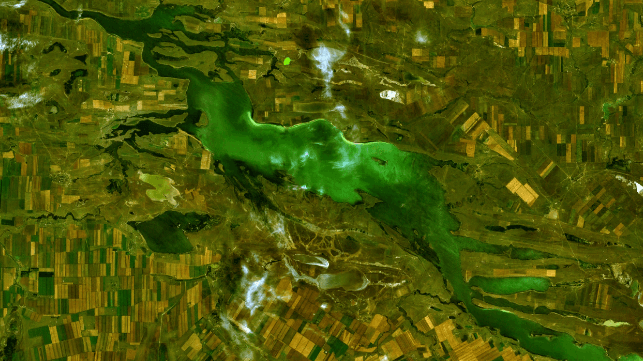Storm Clouds Over Ukraine Threaten the Prospects of the Eurasian Canal

As Russia weighs the possibility of invading Ukraine, it may be jeopardizing a maritime project which would benefit all of the region’s economies. The proposed Eurasian Canal would improve trade connectivity between Europe, the Black Sea and the Central Asian nations around the Caspian Sea, augmenting the limited capacity of the existing Volga-Don Canal.
The Eurasian Canal
The proposed Eurasian Canal is intended to carry ships between the Caspian Sea and Black Sea via the Sea of Azov. At the present time, trans-Caspian Sea vessels carry goods between railway terminals located on the east and west sides of the sea. Nations such as Kazakhstan, Uzbekistan and Turkmenistan recognize the future trade benefit from having a direct maritime connection involving larger vessels sailing between the Caspian Sea and Black Sea, providing access to European markets. The same vessels could, via the eastern and southern coasts of the Caspian Sea, interline with container freight trains that connect to China.
Larger container vessels sailing between Europe and the Caspian have potential to offer economic trade benefit to Iran and China. A substantial volume of container-on-barge traffic sails along the Danube River, connecting to several European nations before the river flows into the Black Sea. The European navigable canal system connects to the Danube and increases the number of European waterway ports which could eventually connect to the Caspian Sea via the proposed Eurasian Canal. An ideal trade scenario would involve ships sailing between the Caspian Sea via the Sea of Azov and the Black Sea to the Danube River.
Construction
River streams that flow west to the Sea of Azov at Rostov and that flow east into the Caspian Sea originate in nearby watershed areas, providing potential for dredging of riverbeds and widening of channels going in opposite directions. While involving almost three times the distance of the Panama Canal, the terrain along the proposed route of the Eurasian Canal would be less challenging. That construction began in 1881 at substantial cost using very basic machinery, and modern excavation machinery would combine higher productivity with lower cost. At the canal’s western entrance, the shallow depth in the Sea of Azov may require several miles of dredged channel that would maintain sufficient navigation depth for commercial ships.
While the construction cost of the proposed Eurasian Canal would be quite substantial, it offers long-term benefit for the economies of several nations.
Political Tensions
Any conflict between Russia and Ukraine would have the potential to disrupt and delay development of the proposed Eurasian Canal, even without the involvement of NATO. The possibility of a Eurasian Canal and ship navigation via the Sea of Azov involves many stakeholders, including nations that would benefit from east-west trade between Caspian Sea ports and European ports. Like Panama and Egypt, which benefit economically from the operation of the Panama Canal and Suez Canal, Russia stands to benefit from the operation and maintenance of a Eurasian Canal. The canal also offers potential benefit to Ukraine’s economy courtesy of trade to and from Caspian Sea ports.
Political tensions between Russia and Ukraine have potential to escalate into armed conflict, which would incur considerable financial cost - resources that could otherwise more productively be allocated to developing the proposed Eurasian Canal. That canal would in turn offer economic benefit to several European nations, including NATO members, along with nations across the Middle East and into Asia. Developing and operating the canal requires long-term political stability in the region around the Sea of Azov.
The opinions expressed herein are the author's and not necessarily those of The Maritime Executive.
